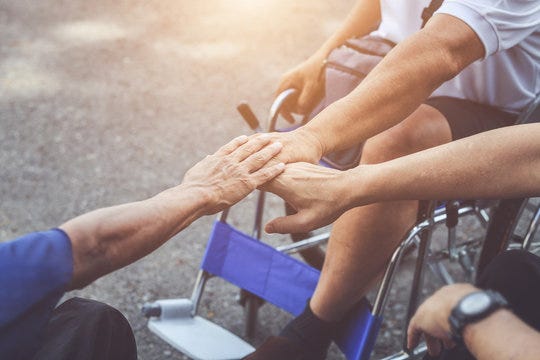NDIS Personal Training: Transforming Fitness For All Abilities
The Revolution Of NDIS Personal Training
The fitness world is evolving, breaking the barriers that once excluded individuals with disabilities from structured physical training. NDIS personal training is at the forefront of this revolution, offering customised fitness solutions for National Disability Insurance Scheme (NDIS) participants. Unlike conventional personal training, this specialised approach focuses on inclusivity, adaptability, and long-term well-being, ensuring that every individual—regardless of physical or cognitive challenges—can access professional fitness coaching. Whether the objective is rehabilitation, enhanced mobility, building strength, or merely keeping active, NDIS personal training is changing what is possible.
Why NDIS Personal Training Is More Than Exercise
1. Personalised Fitness For Individual Needs
Conventional exercise regimes tend to be inflexible and unable to support differences in ability. Personal training through NDIS provides customised regimens that consider medical conditions, physical incapacity, and individual health objectives. Coaches closely collaborate with physiotherapists, occupational therapists, and healthcare professionals to guarantee safe and efficient training techniques.
2. Bridging The Gap Between Therapy And Fitness
Exercise isn't simply a matter of being fit for most NDIS participants—it's a core element of therapy. Strength training helps treat cerebral palsy, spinal cord damage, and multiple sclerosis, and precise exercises enhance motor skills and coordination. Combining rehabilitation with organised training, NDIS personal training connects the dots between therapy and everyday motion.
3. Mental Health Benefits: Exceeding Physical Transfiguration
Physical health is closely interlinked with psychological well-being. People with disability tend to experience depression, social isolation, and anxiety because of mobility issues as well as limitations imposed by society. NDIS personal training induces mental toughness through confidence, self-reliance, and satisfaction. Regular activity increases serotonin and endorphins, naturally enhancing mood and suppressing stress.
The Key Components Of Effective NDIS Personal Training
1. Accessibility And Inclusivity In Fitness Programs
A good NDIS personal training program eliminates the barriers of traditional gyms. This includes access to adaptive equipment, in-home training possibilities, and modifications designed for varying abilities. Some trainers specialise in wheelchair-friendly workouts, water-based therapy, and sensory-friendly exercise spaces.
2. Goal-Based Training For Maximum Impact
Fitness must be quantifiable. NDIS-approved trainers establish precise, attainable targets—expanding walking tolerance, enhancing balance, augmenting fine motor function, or establishing muscle strength. These ordered goals permit participants to monitor progress and maintain motivation.
3. Adaptive Strength Training: Power Without Limits
Strength training is not exclusive to bodybuilders. Numerous NDIS participants need exercises to build muscles, correct posture, avoid joint stiffness, or achieve independence in everyday activities. Adapted strength training methods guarantee efficient and safe workouts, incorporating resistance bands, seated exercises, and machine adaptations to accommodate varying requirements.
4. Cardiovascular Training: Increasing Heart And Lung Health
Aerobic conditioning is essential for people with disabilities to ensure heart health and avoid secondary conditions such as obesity or diabetes. NDIS personal training involves adapted cardiovascular exercises like seated cycling, aquatic aerobics, and assisted walking programs to keep participants active without exhaustion.
The Role Of Technology In NDIS Personal Training
1. Virtual Training For Remote Accessibility
Not everyone can visit a gym or work with an in-person trainer. The rise of virtual NDIS personal training has revolutionised accessibility, allowing participants to engage in guided workouts from home. Video consultations, real-time coaching, and digital progress tracking help individuals maintain consistent fitness routines.
2. Smart Fitness Devices For Performance Monitoring
Wearable technology is becoming more accurate for NDIS personal training. Smartwatches, fitness trackers, and heart rate monitors give instant feedback, allowing trainers to gauge progress and adjust accordingly. They also help track step counts, oxygen levels, and movement patterns to guarantee safe training intensities.
3. Ai And Adaptive Exercise Programs
Artificial intelligence is also being used in personalisation for fitness. AI-based workout plans can monitor an individual's movement, recommend adjustments, and create adaptive exercise plans based on progress. This keeps NDIS personal training dynamic and evolving constantly.
Shared Challenges In NDIS Personal Training And How To Eliminate Them
1. Identifying The Right Trainer
Not every personal trainer is qualified to work with NDIS participants. Selecting a professional familiar with disability-specific training, injury prevention, and therapeutic exercise techniques is essential. Certification in adaptive fitness and experience with NDIS plans must be a given.
2. Financial Barriers And NDIS Funding
Most people think personal training is costly, but NDIS personal training can be covered under the National Disability Insurance Scheme. Participants need to discuss with their NDIS plan manager if they are eligible and how they can be funded under categories like "Improved Health & Well-being" or "Capacity Building."
3. Breaking Down Psychological Barriers
Avoidance of injury, previous adverse history, or low self-esteem typically dissuade people from exercising. The correct trainer provides an encouraging, judgment-free space and, over time, fosters trust and belief in movement.
The Future Of NDIS Personal Training: What's Next?
1. More Inclusive Fitness Facilities
Gymnasiums and fitness clubs are increasingly adding adaptive gym equipment, wheelchair-accessible areas, and accessible group fitness classes to meet the needs of NDIS participants. This is making it more accessible for all to be fit.
2. Integration with Allied Health Services
Future Ndis Personal Training Will Also Involve More Integration With Physiotherapists, Dietitians, And Mental Health Professionals For More Comprehensive Wellness Plans. This Multi-Disciplinary Healthcare Approach Guarantees Well-Rounded Health Gains.
3. National Awareness And Development Of Adaptive Sports
As inclusive sports become more recognised, increased NDIS participants can access community-based sports like wheelchair rugby, adaptive yoga, and para-athletics. These activities allow people to remain physically active outside traditional gym environments.
Conclusion: A New Era Of Fitness Through NDIS Personal Training
The fitness landscape is evolving, and NDIS personal training is at the forefront. No longer an able-bodied luxury, formal physical training is now within reach for all. With personalised exercise programs, assistive technology, and attention to integrated wellness, NDIS participants can shatter physical and mental limitations, gaining strength, autonomy, and improved health. Whether through in-home programs, gym training, or online coaching, NDIS personal training empowers people to take charge of their fitness journey—demonstrating that ability is never a limitation.




